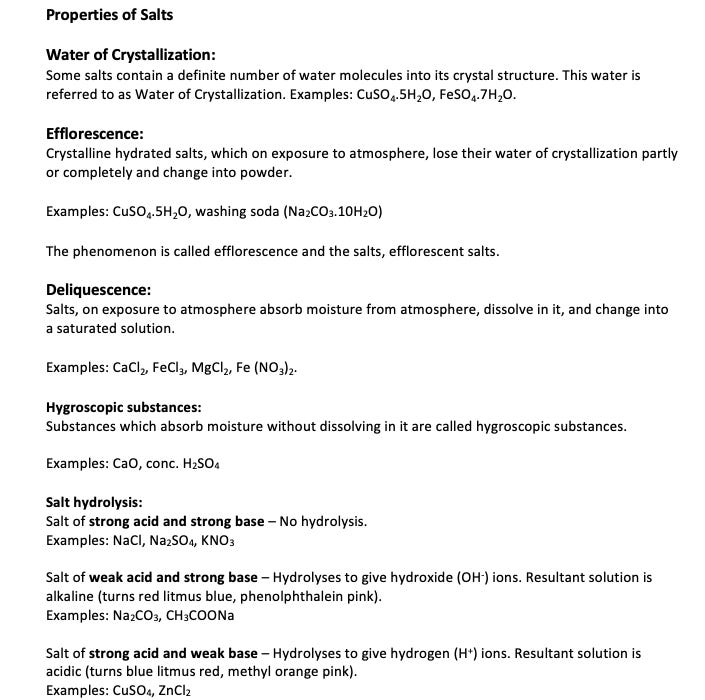What are salts?
Salts are compounds formed by partial or complete replacement of replaceable hydrogen ions of an acid by metallic ions(or ammonium ions).
Types of Salts
Normal Salts: Salts formed by complete replacement of replaceable hydrogen ions of an acid by metallic (or ammonium) ions in an aqueous medium. Examples: NaCl, NaNO3, Na2CO3.
Acid Salts: Salts formed by partial replacement of replaceable hydrogen ions of an acid by metallic (or ammonium) ions in an aqueous medium. Examples: NaHSO4, KHSO4, KHCO3.
Basic Salts: Salts formed by partial replacement of replaceable hydroxyl ions of a base by metallic (or ammonium) ions in an aqueous medium. Examples: Cu(OH)Cl [Basic CuCl2].
Double Salts: Salts produced by mixing two single salts by crystallization of a saturated solution. Examples: Alum [K2SO4.Al2(SO4)3.24H2O].
Mixed Salts: Salts containing two or more basic or acidic radicals. Examples: NaKCO3, Nessler’s Reagent (K2HgI4).
Complex Salts: Salts which contain complex ions. Examples: Sodium Zincate [Na2Zn(OH)4], Sodium Aluminate(NaAlO3), Nessler’s Reagent (K2HgI4).
Solubility of Salts
All nitrates are soluble.
All salts of sodium, potassium, and ammonium are soluble.
All chlorides are soluble except the chlorides of Pb, Ag, Hg.
All sulphates are soluble except the sulphates of Pb, Ba, Ca, Ag
All oxides and hydroxides are insoluble except Na, K, ammonium.





